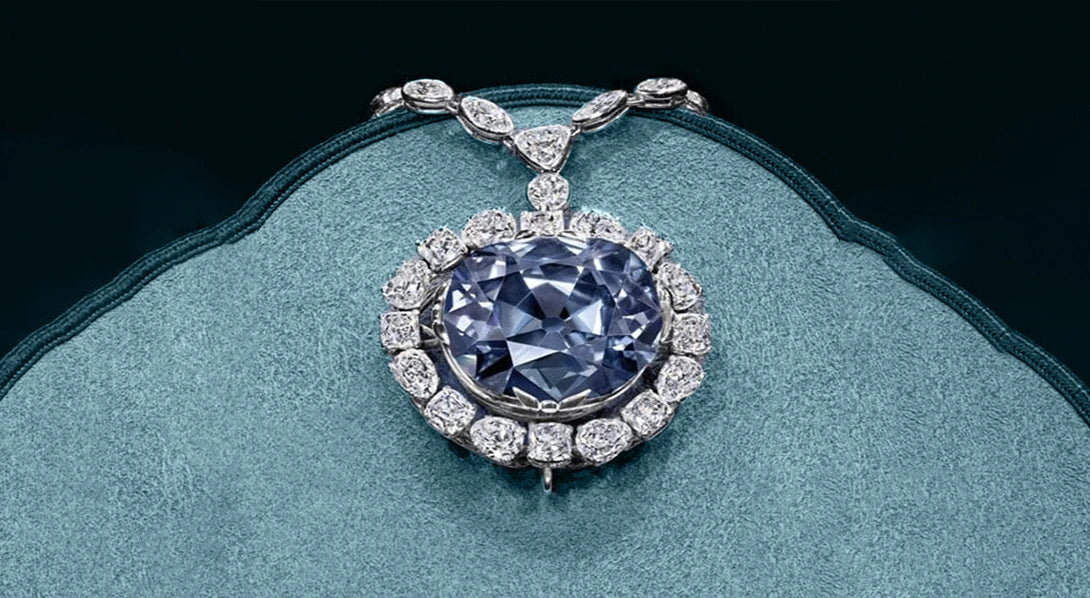
Where to Find the Hope Diamond: A Guide to Its Current Location and History
Share
Introduction
The Hope Diamond, a stunning 45.52-carat deep-blue gem, is not just a beautiful stone but a fascinating artifact that has captivated hearts and minds for centuries. Known for its mesmerizing color and intriguing history, the diamond has journeyed through various hands, leaving behind tales of royalty, intrigue, and myths. In this guide, we will explore the current location of the Hope Diamond, delve into its rich history, and uncover the stories that surround this legendary gem.
Current Location
The Hope Diamond is currently housed at the Smithsonian National Museum of Natural History in Washington, D.C. It has been part of the museum's collection since 1958 and is displayed in the Harry Winston Gallery. This location not only preserves the diamond but also educates the public about its significance and the science of gemology.
Visitors can view the Hope Diamond up close, surrounded by informative displays that detail its journey through history, the myths associated with it, and its unique physical properties. The gallery is designed to enhance the viewing experience, allowing guests to appreciate the diamond's brilliance and color in a well-lit environment.
A Brief History of the Hope Diamond
The history of the Hope Diamond is as intricate as the stone itself. Here are key milestones in its fascinating journey:
- Origin: The diamond is believed to have originated from the Kollur mine in India, where it was part of a larger rough diamond. Its exact origin remains shrouded in mystery, but it is thought to have been mined in the 17th century.
- Connection to the French Blue: Many historians theorize that the Hope Diamond is linked to the French Blue, a diamond that adorned the French Crown Jewels during the reign of King Louis XIV. The French Blue was a larger stone that is said to have been stolen during the French Revolution.
- Ownership Changes: Over the years, the diamond passed through the hands of various notable figures:
- King Louis XIV: The diamond was set into a piece of royal jewelry, symbolizing power and wealth.
- Georges Frédéric Strass: After the French Revolution, the diamond was eventually acquired by Strass, a jeweler who recut it to enhance its brilliance.
- American Socialite Evalyn Walsh McLean: In the early 20th century, the diamond became a part of McLean's extravagant collection, where it was often displayed and wore at social events.
- Donation to the Smithsonian: In 1958, jeweler Harry Winston donated the diamond to the Smithsonian, ensuring its preservation and public display. Winston's generous act made the Hope Diamond accessible to millions of visitors.
Physical Properties
The Hope Diamond is classified as a type IIb diamond, which is a rare classification indicating the presence of boron, giving it its stunning blue hue. The unique color is a result of intricate atomic-level interactions, making it a fascinating subject of ongoing scientific study.
Key physical characteristics of the Hope Diamond include:
- Size: Weighing in at 45.52 carats, it is one of the largest blue diamonds in existence.
- Color: Its deep, vivid blue color is unparalleled and often regarded as the most beautiful shade of blue in any diamond.
- Clarity: While not entirely flawless, its inclusions are relatively minor and do not detract from its brilliance.
- Luminescence: The diamond exhibits a remarkable ability to reflect and refract light, enhancing its sparkle and shimmer.
Significance and Mystique
The Hope Diamond's allure is enhanced by the legends surrounding it, including tales of a curse that supposedly brings misfortune to its owners. Some of the most notable stories include:
- King Louis XVI and Marie Antoinette: Both were said to have suffered tragic fates, with their lives ending in the turmoil of the French Revolution.
- Evalyn Walsh McLean: Her ownership was marked by personal tragedies, including the deaths of her children and her eventual financial ruin.
- Harry Winston: Although he donated the diamond, his career was also fraught with challenges, raising questions about the diamond's curse.
While the existence of this curse is widely debated, it has undoubtedly added to the diamond's mystique and has been a topic of fascination for historians and gem enthusiasts alike.
Visiting the Hope Diamond
If you're planning to see the Hope Diamond, here are some tips to enhance your visit:
- Plan Ahead: Check the Smithsonian's website for any special exhibits or events that may coincide with your visit.
- Guided Tours: Consider taking a guided tour to gain deeper insights into the diamond's history and significance.
- Photography: Be prepared to take pictures, but remember that some areas may have restrictions on flash photography.
- Explore Related Exhibits: Take the time to explore other gems and minerals on display in the museum to appreciate the broader context of the Hope Diamond.
Conclusion
The Hope Diamond is a symbol of both natural beauty and the complex tapestry of human history. Its current home at the Smithsonian National Museum of Natural History allows it to inspire and captivate generations of visitors. Whether you are a gem enthusiast or a history buff, a visit to see the Hope Diamond is a must for anyone interested in the stories that shape our world.
From its mysterious origins in India to its celebrated place in the heart of a major museum, the Hope Diamond continues to shine brightly, representing the allure of gemstones and the enduring nature of human storytelling. As you stand before this magnificent gem, you become part of a legacy that spans centuries, filled with tales of triumph, tragedy, and unparalleled beauty.